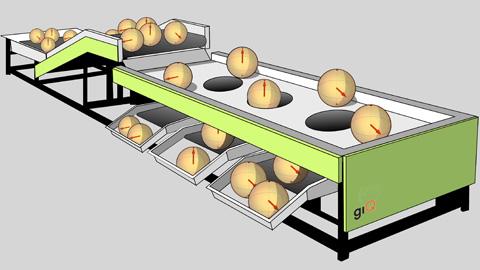A new quantum data classification protocol brings us nearer to a future 'quantum internet'

Schedule of the quantum data classification protocol Credit: UAB
Quantum-based communication and computation technologies promise unprecedented applications, such as unconditionally secure communications, ultra-precise sensors, and quantum computers capable of solving specific problems with a level of efficiency impossible to reach by classical computers.
In recent times, quantum computers are also envisioned as nodes in a network of quantum devices, where connections are established via quantum channels and data are quantum systems that flow through the network, thus setting the bases for a future “quantum internet”.
With the design of these quantum information networks come new theoretical challenges, given that it is necessary to establish optimised automated information treatment protocols to work with quantum data, in the same way as current communcation networks automatically manage information.
UAB researchers have had to deal with one of these challenges for the first time: the problem with sorting data from a quantum systems network according to the state in which they were prepared. The researchers have devised an optimal procedure that can identify clusters of identically prepared quantum systems.
The protocol developed by researchers at the UAB shows a natural connection to an archetypical use case of classical machine learning: clustering data samples according to whether they share a common underlying probability distribution.
The problem is similar to how a classical computer discerns the origin of different sounds captured simultaneously by a microphone placed on the street. The computer can recognise patterns and discern a conversation, traffic, and a street musician. However, unlike soundwaves, identifying patterns in quantum data is much more challenging, since a mere observation only provides partial information and irretrievably degrades the data in the process.
Physicists at the UAB were also able to compare the performances of classical and quantum protocols. According to the researchers, the new protocol by far outperforms classical strategies, particularly for large dimensional data.
This proposal represents a new step towards quantum information networks, since it sets a solid theoretical framework on what is physically possible in the field of automated classification and distribution of quantum information.
The research was published today in the journal Physical Review X and is signed by researchers from the Quantum Phenomena and Information Unit at the UAB Department of Physics Gael Sentís, Àlex Monràs, Ramon Muñoz-Tàpia, Jon Calsamiglia and Emilio Bagan.
Media Contact
More Information:
http://dx.doi.org/10.1103/PhysRevX.9.041029All latest news from the category: Information Technology
Here you can find a summary of innovations in the fields of information and data processing and up-to-date developments on IT equipment and hardware.
This area covers topics such as IT services, IT architectures, IT management and telecommunications.
Newest articles

NASA: Mystery of life’s handedness deepens
The mystery of why life uses molecules with specific orientations has deepened with a NASA-funded discovery that RNA — a key molecule thought to have potentially held the instructions for…

What are the effects of historic lithium mining on water quality?
Study reveals low levels of common contaminants but high levels of other elements in waters associated with an abandoned lithium mine. Lithium ore and mining waste from a historic lithium…

Quantum-inspired design boosts efficiency of heat-to-electricity conversion
Rice engineers take unconventional route to improving thermophotovoltaic systems. Researchers at Rice University have found a new way to improve a key element of thermophotovoltaic (TPV) systems, which convert heat…



